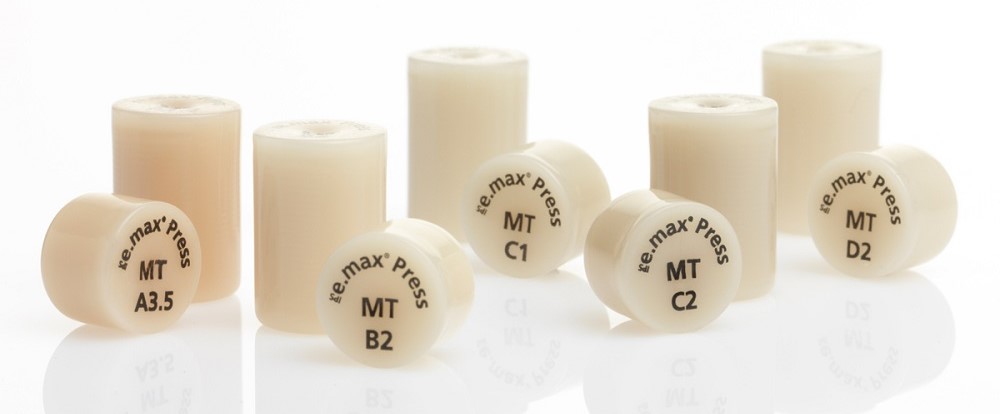

Over many years, the IPS e.max Press material and the Programat G2 press furnace have been consistently further developed to work together smoothly. The benefits of these fine-tuning efforts are clearly revealed in the fabrication of esthetic anterior restorations. Nicola Pietrobon, a seasoned dental technician, shows the excellent results he is able to achieve with this winning combination.
The restorations presented here were created in collaboration with Dr med. dent. Stefan Paul in Zurich, Switzerland.
Preoperative situation
The patient presented to our laboratory because she wished to have the appearance of her front teeth improved. The enamel defects had previously been built up and enhanced with composite resin. However, the result was not to her satisfaction

Figure 1: The photo shows the preoperative view before the treatment commenced.
Procedure

Figure 2: Nicola Pietrobon uses a Programat EP 5010 G2 to create IPS e.max Press restorations

Figure 3: In the laboratory, the pressed IPS e.max Press crowns and veneers were prepared for their placement in the patient’s mouth.
6. Cementation:
The prepared crowns and veneers were etched in preparation for cementation.

Figure 4: The completed crowns and veneers were placed in the patient's mouth.
The outcome clearly demonstrates how state-of-the-art ceramic materials are capable of reproducing the natural tooth structure and what type of restorations can be produced with them.
The IPS e.max Press restorations were successfully placed, and everyone involved in the case was highly satisfied with the result. Due to their true-to-nature translucency and opacity* the ceramic restorations blended in seamlessly with the natural teeth. The outcome clearly demonstrates how state-of-the-art ceramic materials are capable of reproducing the natural tooth structure and what type of restorations can be produced with them.
Better trust the original: the Ivoclar press technology. Lab-proven. Future-proof.
Original source Ivoclar Blog - posted with permission